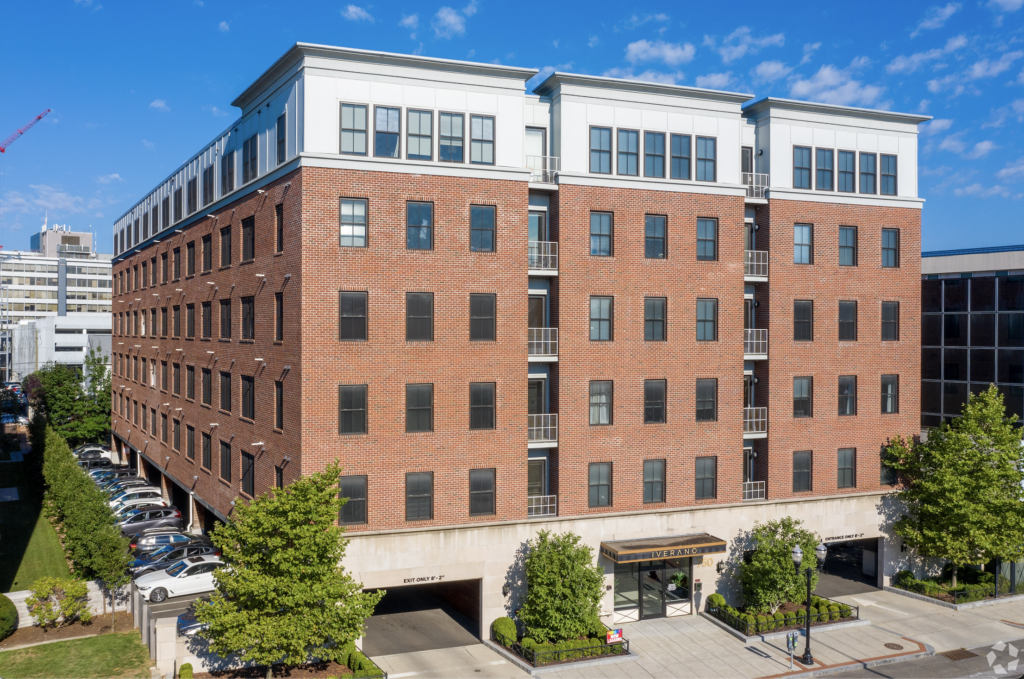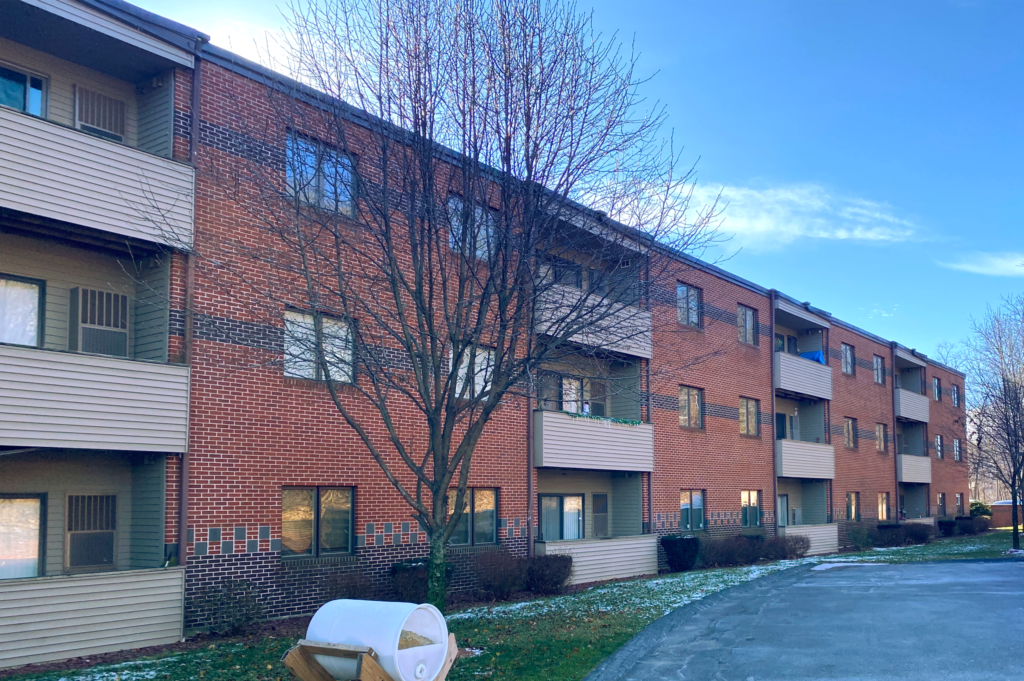Before you close contingencies on a property under contract, be sure to check for any hidden costs and loose ends associated with the deal that could cause grief down the road. It is best practice to create a checklist involving inspections, audits, and property analysis to accomplish this. Two categories define this checklist: physical due diligence and financial due diligence. In simple terms, due diligence is the process of confirming that a seller accurately represented all aspects of the property to you.

Physical multifamily due diligence.
When looking at a real estate investment, inspecting the physical property is always at the forefront of every potential customer’s mind. Physical multifamily due diligence is perhaps the most familiar if you have ever rented an apartment or purchased a home. However, this process is more involved than just a simple inspection when dealing with an investment property.
Property Walkthrough
For many, a simple property walkthrough might seem synonymous with thorough property due diligence. Nearly every adult has walked through an apartment or home to assess the situation. The prospective client will then go home and try to make an informed decision to purchase or lease.
An investor’s walkthrough of a multifamily apartment building tends to be a little more involved than a tenant looking through a rental, but much of the core principles are the same. The goal is to assess the property’s condition to make sure the structure and the fixtures are solid. As a real estate investor, you are much more concerned with the long-term survival of the property rather than the cosmetics tenants usually find essential. Superficial improvements can be quickly remediated for low costs yet discovering problems with the building’s integrity is crucial. Structural damage can provide tremendous, unexpected costs. Avoiding it will save you headaches and overhead as an investor down the road. Here are a few tips according to Apartments.com.
What should I look for when touring a multifamily property?
- Condition of the roof
- Condition of the foundation
- Don’t just take the word of the appraiser/inspector
- Be thorough
- Take pictures and videos
- Do the appliances and utilities work
- Areas for value-add improvements
The property walkthrough is one of the few components of the multifamily due diligence process you perform directly on the apartment building. Trust your gut and do your homework before and after the walk. It will get easier with practice, and you will be able to identify problems in no time.
Property Condition Assessment
A property condition assessment (PCA), also known as a capital needs assessment (CNA), is conducted by a third-party provider and is essentially the commercial version of a residential home inspection. According to Multifamily Loans, this report will assess the condition of the property and will provide insight into current and future costs. Ideally, all third parties are scheduled on the same day to minimize disruption to the tenants.
When visiting the property, you can expect the assessor to look at the following per GLE Associates.
· Building envelope (the space between the exterior and interior walls)
· Structural systems
· HVAC systems
· Electrical systems
· Plumbing systems
· Interior finishes
Some of the capital needs from this report must get tackled right away. Other issues may present less critical and may not require intervention for up to ten years down the road of ownership.
The value of a property condition assessment is critical to your multifamily due diligence checklist as an investor.
For example, you are approved for a loan to buy a $10 million multifamily apartment building, but the PCA illuminates $2 million of damage that must get fixed when the deal is closed. In this scenario, this assessment reveals significant overevaluation.
Lenders for HUD multifamily loans can require specified property condition assessments. Government mortgage lenders such as Fannie Mae and Freddie Mac also demand these. Some lenders require that you set aside funds for these future property repairs. These funds are known as replacement reserves.

Environmental Site Assessment
After the property’s structure gets assessed for damage and future repairs, the next logical step is to identify and evaluate any potential environmental concerns on the property. Environmental site assessments accomplish this.
Phase I Report
Like a market report and a property condition assessment, lenders may require borrowers to get an environmental site assessment or ESA before they approve them for a loan. Additionally, buyers may want these reports conducted regardless of the lender’s requirements. These come in multiple phases. Phase I is a limited report. Examiners will go to the property for a physical inspection and pull public records to review how the property and surrounding properties were used historically to determine what environmental contaminants may currently be present on-site.
A Phase I ESA will look for any traces of the following:
- Petroleum products
- Dangerous chemicals
- Pesticides
- Mold
- Asbestos
- Radon
- Lead paint
- Hazardous building elements
Phase II Investigation
Fortunately, environmental testing could stop at a research report, and will not require further investigation. Most properties will only need a Phase I ESA, though some may require a Phase II.
If Phase I comes back clean and there is no risk of environmental hazards, lenders require no further testing. However, if Phase I reveals environmental concerns; lenders will have you move on to a second report called a Phase II Investigation. Unlike the prior exam, Phase II will require soil samples to be taken from the property for to test. Phase II can be time-consuming, so prior knowledge about the property’s history with potential contaminants is invaluable information for an investor.
Appraisal
One of the essential parts of the multifamily due diligence is a checklist. The appraisal often creates a great deal of stress for everyone involved in the agreement.
An appraiser is a professional who determines the market value of an asset, particularly in the real estate industry. This independent and non-biased appraiser will determine the asset’s value and provide that information to the investor and lender. The valuation factors in the physical condition of the property, its location, analysis of multifamily real estate market sales and other pertinent facts. An appraisal will be required by a buyer or a lender to gauge the value of the asset.
Financial Multifamily Due Diligence
Correctly underwriting the building may separate a good deal from a bad deal. Financial and operational property due diligence will corroborate that the information provided to you when underwriting the property was accurate.

Rent Roll & Lease Audit
When investing in commercial real estate, the value is not only derived from the physical property, but the income stream it creates as well. Per Bigger Pockets, a rent roll is a list of rents that includes the amount due from each tenant as well as the total received. The rent roll will consist of information about the tenant’s lease period in most cases. Make sure this corresponds to the actual leases. A lease audit is a third-party report that reviews a commercial or multifamily property’s current leases.
Existing property management may conduct the audit, but you should hire someone else if you suspect bias. The procedure will frequently begin with reviewing a property’s rent roll, but it may go much further. A lease audit will look at every component of the lease.
Lease Abstraction
As an investor, it is important to know who the tenants are and understand the provisions in their leases. When reviewing the leases, it is key to understand the leases term, rental increases, common area reimbursements and extension options. This step of the multifamily due diligence checklist further confirms the information provided to you by the seller/broker when you initially investigated the property. According to DealSumm, Lease Abstraction is “summarizing and capturing key provisions within leases.” This process helps illuminate critical points, so no stone gets left unturned.
Financial Audit Report
Fully understanding the property’s financial background is crucial as an investor, but you are not the only party interested in this. Per SnapInspect, Borrowers will review the building’s historical financials to determine if it is a viable project to lend on. During the process they may ask for statements like a trailing 12-month income statement (T-12), current rent roll and possible actual copies of bills amongst other things. The T-12/P&L are used to gauge the investments health and make general predictions about how it will run in the future. Tough helpful, this information is not enough to make an informed conclusion regarding the property’s future profitability; instead contact a real estate consulting firm to review the property’s previous financial accounts. The financial audit report can assist in identifying any issues or anomalies and ensure that a borrower’s estimates are generally accurate. The firm will compile these statements along with their professional analysis to provide a financial audit report.
Market Report
Analyze your market. Investors in commercial real estate typically operate with a considerably broader map than buyers of single-family homes. Understanding all facets of your target market is key. Indicators like population growth, employment rates, crime rates and household income will help you understand your tenancy. Knowing top employers and economic drivers within the area should also be considered.
Gathering this information could be daunting, reach out to a real estate consultant agency to help you with this by providing a market report. The property market report is a comprehensive will detail the demographics of a market and will compare the target property with similar ones within the multifamily real estate market. Elements such as rent price, unit type, occupancy rate, building age, historical stats, facilities, supply & demand, etc., are included. Utilize your property market report’s finding to confirm your rental rates. These factors may influence the property’s long-term profitability.
Title Report
Review by a title company or attorney, lenders generally require a title report “to determine the legal status of the title of the property.” This report helps weed out irregularities in the chain of ownership of the deal. Mainly documenting any competing legal claim on the property from anyone besides the seller. Claimants could include previous owners and their families or even individuals who performed work on the property. The title report is crucial because the last thing a real estate investor would want is someone invalidating their new ownership after closing a deal. As part of the multifamily due diligence checklist, you should review any previous contracts between the seller and other third parties. These contracts carry over when the ownership transfers.
Obtaining a title report may be necessary to file for a lender’s title insurance, which is critical for most lenders. In most circumstances, title reports and title insurance require an investor or borrower to obtain a site survey of the property, which confirms the property’s specific boundaries and accurately defines the lot size.
We hope that this multifamily due diligence checklist provides you with some insight into the process of best practices for closing a multifamily apartment deal. Armed with the know-how, a real estate investor can make more informed decisions and create tremendous value over a long and successful career.
If you like this blog post, please share it!


Patricia Brumley |
Thanks
Nicole Adams |
Thank you for reading our blog about Multifamily Due Diligence Checklist for Property Investors. If you need any further information, feel free to reach out to one of our agents.